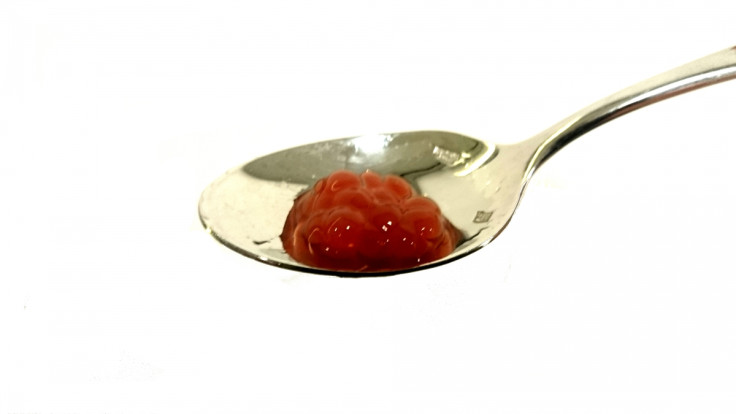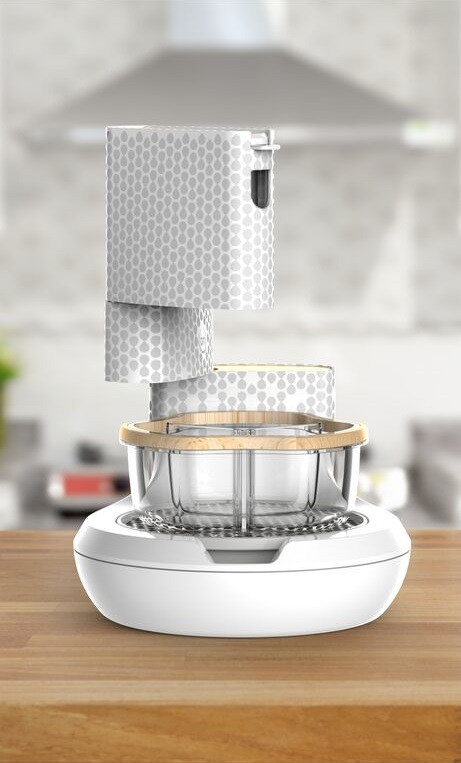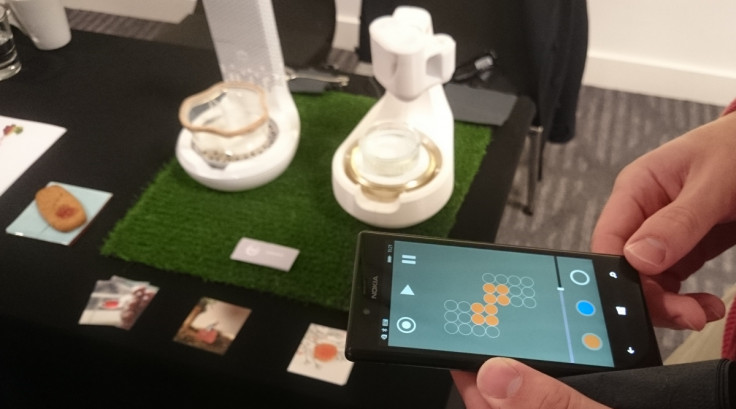Nufood Robot 3D Printer brings customisable taste, colour and texture to your food

It tasted like a raspberry, it had the texture of a raspberry, it even looked like a raspberry - but it was not a raspberry. It had in fact just been 3D printed from a new kitchen appliance that could soon revolutionise the way we eat and drink.
The Nufood Robot 3D Printer, developed by UK-based firm Dovetailed, uses 3D printing technology to allow users to customise the colour, taste, texture, shape and nutritional content of their food. Contained within the "flavour bomb" liquid capsules are all natural ingredients, which can be used to imitate existing fruits and foods, or combined to create entirely new ones.

To replicate the flavour of a raspberry, for example, the capsules contain raspberry juice and balsamic vinegar. An accompanying app allows users to design the shape of the food, which is then recreated by the 3D printer by dropping the capsules into a water-based liquid.
"Nufood is a unique new kitchen appliance that allows the creation of a new dining experience through 3D printing," Robert Curtis, who led the development of the Nufood Robot 3D Printer, told IBTimes UK. "There is the potential for everyday use. We envision a time when people can create whatever they want on demand.
"Like the range of flavours, the use case possibilities are vast. It can be used to create new condiments, food toppings, or even within cocktails. And you'll be surprised what flavours work together, like the combination of raspberry flavour bombs with chili flavour bombs."
The Nufood Robot 3D Printer is still in the prototyping stage but Dovetailed is currently preparing for a crowdfunding campaign that it hopes will lead to a significant production run next year.
Eventually it is hoped consumers will be able to buy the appliance for around the same price as a high-end kitchen espresso machine. While 3D printers for food already exist, Curtis cites two crucial differences that distinguish the Nufood Robot 3D Printer from what is currently available.

"Firstly, a lot of competitors liquidise the food and extrude in a shape," Curtis said. "We go beyond this by providing exciting new possibilities in cuisine, with new textures, flavours and experiences.
"Secondly, competitors tend to retrofit existing 3D printers to make them usable for food. As it's built specifically for this purpose, the Nufood printer is cleaner and more hygenic. We want it to be a desirable product that people want to have on show in their kitchen - not stashed away in a workshop somewhere."
The Nufood Robot was on show at the Re.Work Future Technology Summit in London on 24 and 25 September.
© Copyright IBTimes 2025. All rights reserved.






















